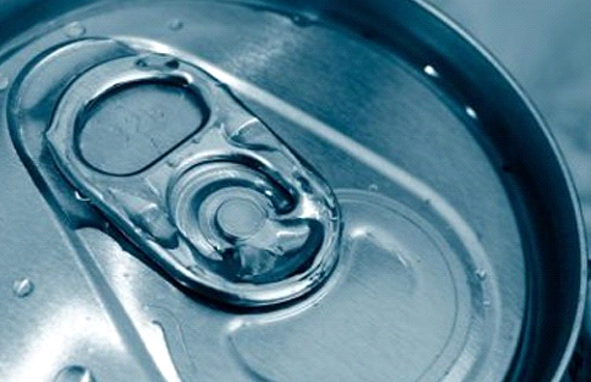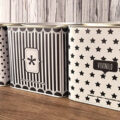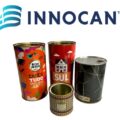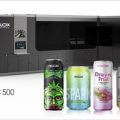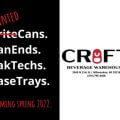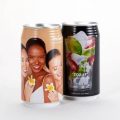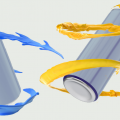The global beverage can market is experiencing a significant increase in sales, especially in the soft drink category, as well as in alcoholic and non-alcoholic beverages. This growth is due to the popularity of ready-to-drink (RTD) beverages and premium mixers, driven by the emerging trend of preparing cocktails at home.
On the other hand, new product categories such as organic energy drinks and those containing CBD have also been introduced in response to the influence of Generation Z. This generation has shown an increased interest in healthy lifestyles, which has led to an increase in demand for “healthy and energy” soft drinks or low-alcohol beverages.
Due to the increasing demand for beverage cans, mainly for their light weight and sustainable properties, there is a possibility for the implementation of innovative packaging ideas and modern printing technologies. Smaller and medium-sized companies in the industry now have the opportunity to be creative with eye-catching designs and colorful printing directly on the surface of the cans, as well as offering a more environmentally friendly option.
In the canned craft beverage industry, there are several print-related challenges to be faced. Both the packaging process and labeling are critical to establishing and promoting brands, attracting consumers and complying with regulations.
In addition, the growing concern for sustainability has put pressure on smaller and medium-sized beverage brands in the industry to adopt greener alternatives in terms of printing and packaging. This has led companies to opt for the use of aluminum cans and to look for decoration methods that do not involve the use of plastic. In addition, these cans can be recycled several times without losing their original quality, thanks to the direct printing methods used on them.
With the craft beverage market growing with more than 10,000 brands in North America alone and steady growth in Europe, it is important to stand out from the competition by using advanced decorative techniques. Meeting these demands requires advanced printing technologies capable of complex design, high quality printing, finishing and unique capabilities.
Craft beverage brands that prefer to produce smaller or medium-sized batches often face delays in the delivery of their packaging from suppliers. Due to the time required to print labels or shrink sleeves and to ship and apply the cans, these brands need to hold large amounts of inventory, making it difficult to respond quickly to market demands.
Over time, the decoration of beverage cans has evolved considerably. Initially, simple printing techniques such as lithography and the use of paper labels were used to enhance their appearance. However, with the advance of technology, new options emerged, such as digital printing on flat surfaces, which allowed for a greater level of detail and creativity in the designs.
This also gave rise to a new way of making advertising campaigns more focused and with a higher quality. Despite this, the labels presented challenges in terms of durability and proper application. Over time, other alternatives such as shrink sleeves and pressure-sensitive labels emerged that offered better strength and variety in designs, but also brought challenges in terms of application and sustainability.
Nowadays, the decoration of aluminum cans is an essential step in their manufacturing process. Offset printing machines connected to the production line are used to print directly on the can. However, this method requires the use of plates and a lengthy set-up process, as well as large job runs that can include hundreds of thousands of cans.
The industry has had to adapt to the demands of today’s market, which demands high quality decoration, unique capabilities, faster lead times, flexibility in production and a focus on sustainability. In this context, direct-to-shape digital printing has become a fundamental tool to face these challenges and mark an important change in the industry.
The use of direct digital decorating technology in the Velox form has revolutionized the can decorating process. With the Velox IDS-NC™ series for necked beverage cans, unmatched decorating speeds of up to 500 cpm and high operational flexibility can be achieved. This means that it is possible to print any quantity with no minimum order quantity and to quickly switch between jobs, which streamlines the process, reduces the time to market and eliminates excess production. Velox solutions also offer a low total cost of ownership by increasing production capacity through fast set-up and print speed, eliminating the need for shrink sleeves or labels and reducing inventory and storage costs.
Velox technology stands out for its high quality and ability to display true-to-life images with a wide color gamut. In addition, it offers unique decoration features such as the possibility of covering the entire surface of the can with designs, matte or glossy finishes, selective tactile effects and metallic details.
On the other hand, this innovation especially benefits small and medium-sized brands that produce craft beer, seltzer, kombucha or other functional beverages by allowing them to be more sustainable by printing directly on the can and eliminating the need for plastic wrappers or shrink labels that generate unnecessary plastic waste and make it difficult to recycle aluminum.
By 2024, environmentally friendly printing methods are expected to become more common and adapted in the industry. In addition, artificial intelligence could play a key role in optimizing commercial designs to meet individual consumer preferences. These technological improvements are expected to enable faster and more efficient decoration, including 3D effects and innovative inks such as fluorescent or invisible inks. This will make direct-to-form printing more competitive and a popular choice compared to traditional decoration methods.

